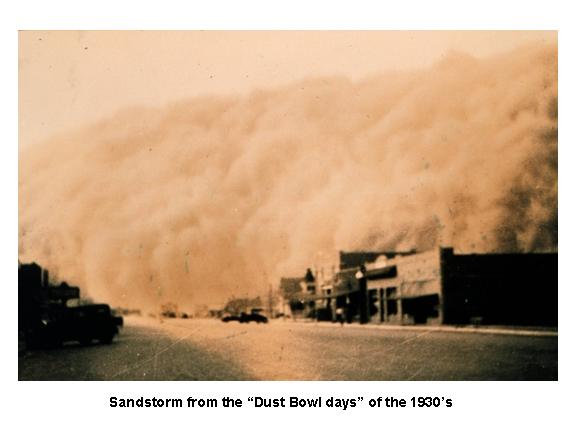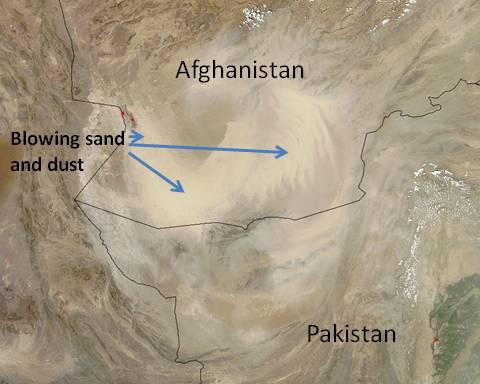
|
What causes sandstorms (duststorms)?
|
Sandstorms -- also called duststorms -- are caused by strong winds blowing over loose soil or sand, and picking up so much
of that material that visibility is greatly reduced. The widespread abundance of loose sand in deserts makes them the most common locations for
sandstorms to form.
In desert regions at certain times of the year, sandstorms
become more frequent because the strong heating of the air over the desert causes the lower atmosphere
to become unstable. This instability mixes strong winds in the
middle troposphere downward to the surface, producing stronger winds at the surface.
The folloing NASA Aqua satellite image shows a widespread sandstorm over Afghanistan and Pakistan on August 24, 2010:
|

|
Sandstorms are notorious for getting sand into equipment, houses, and just about every nook and cranny of everything. The abrasive characteristics
of the sand can be harmful to machinery.
|
Interesting facts:
|
| THE DUST BOWLThere was a prolonged drought in the Great Plains of
the United States in the 1930's. This led to vast areas of exposed dirt, which helped feed dust storms. This event is
believed to have been caused by an unusual sea surface temperature pattern in the eastern Pacific Ocean, made worse by poor
land use practices by farmers plowing up relatively dry grassland to plant wheat. The Dust Bowl, which made life even more
misearble for many during
the Great Depression, was highlighted in John Steinbeck's novel "The Grapes of Wrath".
|
|
(page last updated 12/15/2019)
|




